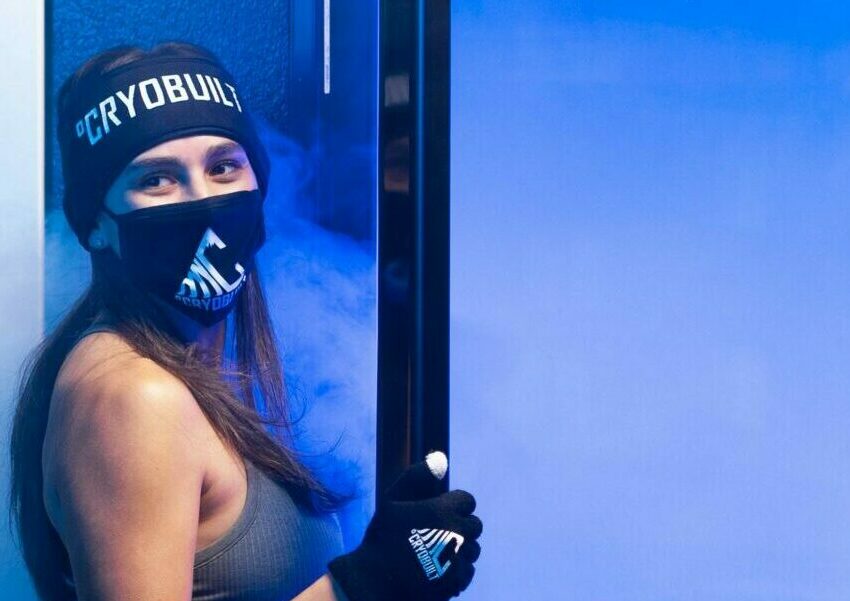
cryotherapy: picture: pexels
“The thought of being in a minus 87-degree cold chamber was absolutely absurd. Until I actually stepped into a minus 87-degree cold chamber…”
Cryotherapy, also known as ‘cold therapy,’ is a therapeutic wellness treatment that has gained significant popularity worldwide. “After experiencing it firsthand, I understand why,” writes Woman&Home’s Amy-Lee Steenkamp.
Cool down with cryotherapy
Cryotherapy involves exposing the body to extremely cold dry air for a short period, typically a duration of 3 minutes to promote health benefits. Whether you’re an athlete, a health and wellness enthusiast, or simply curious about new wellness practices, cryotherapy is worth exploring.
Cryotherapy can be administered locally or to the whole body.
Localised cryotherapy: This method is one we have all tried before. It targets specific areas of the body using ice packs or coolant sprays.
Whole-body cryotherapy: This involves standing in a chamber cooled to temperatures between -85 to -110°C for 2-4 minutes. Liquid nitrogen or refrigerated air is used to rapidly drop the temperature, shocking the body into a state that can stimulate various physiological responses.
The benefits of cryotherapy
Whole-body cryotherapy serves as a veritable force in promoting natural healing within the human body. The experience is engineered to stimulate the body’s innate healing abilities, triggering responses on multiple levels—most notably within the circulatory system, energy meridians, and the nervous system:
Muscle pain management and accelerated recovery
When thinking about when to book my cryotherapy session for, I knew it had to be after an intense gym session in order to really immerse myself into the experience and reap the benefits. Cryotherapy is widely used by athletes to relieve soreness and improve recovery after intense workouts. The cold temperatures help reduce inflammation, promote blood flow and speed up muscle repair.
Chronic pain relief
As someone who battles with fibromyalgia, I couldn’t fathom how cold exposure can help with pain because I often experience pain flare-ups when it’s cold. To my surprise, conditions like arthritis, fibromyalgia, and chronic back pain may benefit from cryotherapy as it helps reduce inflammation and desensitise nerve endings.
Boosts mood and mental health
Remember to breathe when you’re freezing your @!! off. Easier said than done when frost is forming on your arm hairs.
I did prepare mentally for the experience beforehand. It is completely natural to feel a bit anxious walking into a cold chamber. I was lucky enough to have an amazing therapist guide me through the entire 3 minutes.
After the session, your mood can retaliate in 1 of 2 ways. Either you can be energised and on a high due to the release of endorphins (happy hormones), or your body can respond in a mellow manner. Personally, I was almost bouncing off the walls.
Skin health
Cryotherapy can improve skin tone and reduce signs of ageing by increasing blood circulation and collagen production. Some also use it to manage skin conditions like eczema or psoriasis.
Improved sleep quality
Many individuals report better sleep after cryotherapy sessions, possibly due to its calming effects and the reduction of pain and inflammation – I can attest to that. My sleep is often broken and disrupted by the horrific 2-3 am wake-up, struggling to fall asleep again. After cryotherapy, I slept like a baby.
The following morning, my body felt lighter and the energy boost just continued.
Cryotherapy is not for you if…
You’re pregnant: The effects of extreme cold on pregnancy are not well-studied, so it’s best avoided.
You have a heart condition: The cold can place stress on the cardiovascular system, making it risky for individuals with heart problems. Specifically, you have a pacemaker.
You have Raynaud’s disease: This condition causes blood vessels to overreact to cold, potentially leading to severe discomfort or complications.
You battle hypertension: Cryotherapy can increase blood pressure, posing a risk to those with uncontrolled hypertension.
You have open wounds: Exposing damaged or compromised skin to extreme cold may exacerbate issues.
You’ve got a sensitivity to cold or allergies: People who are sensitive to cold or have cold urticaria (a condition where cold triggers allergic reactions) should avoid cryotherapy.
What to expect during a cryotherapy session
Preparation: Wear minimal clothing (typically shorts and a sports bra or underwear) and protective gear like gloves, socks, a mask and a headband to shield extremities.
The session: You’ll step into a cryo chamber or cryo sauna for 2-4 minutes. The cold can feel intense but is usually tolerable. A gust is air envelops the chamber, once the air has settled, it’s rather beautiful as you begin to notice the specs of frost floating around you in the chamber. Always remember, that the chamber door does not lock, so if you do feel too overwhelmed or cannot handle the cold, you can exit the chamber.
Post-treatment: Many people report feeling invigorated and energised immediately after the session. Prepare for your best night’s sleep.
Cryotherapy is an extreme yet fascinating treatment. However, it’s essential to weigh the risks and consult a healthcare provider before trying it, especially if you have pre-existing conditions. As research continues, cryotherapy’s place in wellness and healthcare will likely become even clearer.
Compiled by: Amy Steenkamp
First published by Woman&home
Also see: Shopping for sanity: Understanding the root of retail therapy
